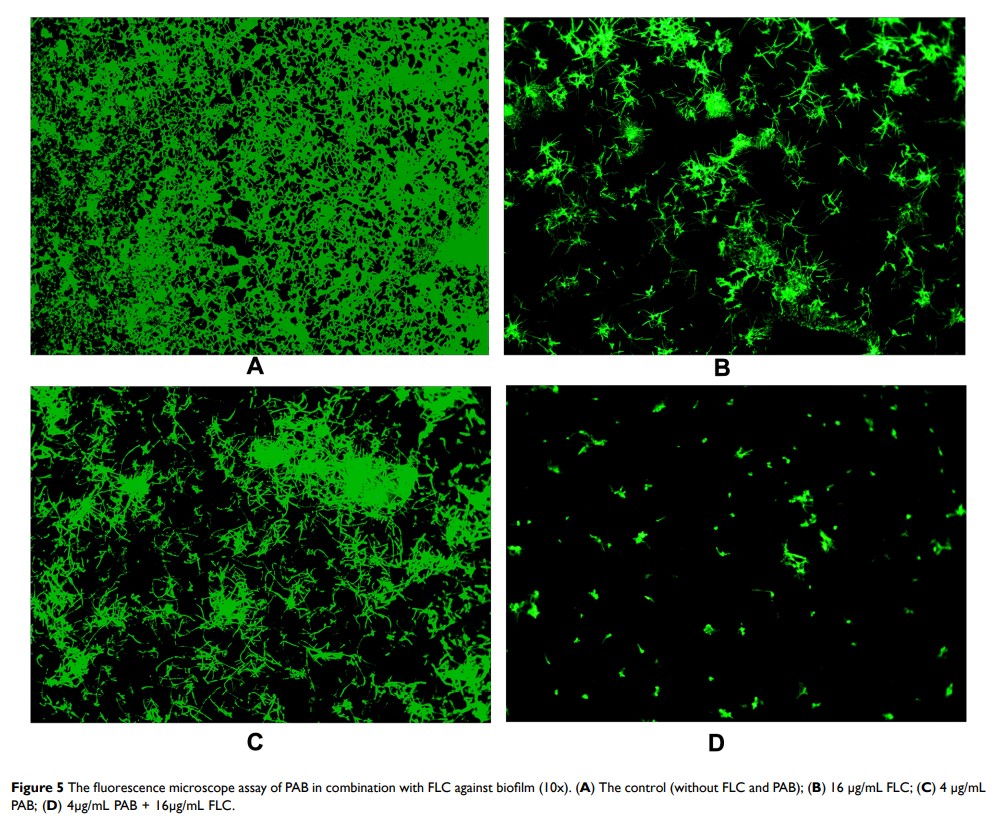9 7 7 8 0
论文已发表
注册即可获取德孚的最新动态
IF 收录期刊
- 3.3 Breast Cancer (Dove Med Press)
- 3.4 Clin Epidemiol
- 2.5 Cancer Manag Res
- 2.9 Infect Drug Resist
- 3.5 Clin Interv Aging
- 4.7 Drug Des Dev Ther
- 2.7 Int J Chronic Obstr
- 6.6 Int J Nanomed
- 2.5 Int J Women's Health
- 2.5 Neuropsych Dis Treat
- 2.7 OncoTargets Ther
- 2.0 Patient Prefer Adher
- 2.3 Ther Clin Risk Manag
- 2.5 J Pain Res
- 2.8 Diabet Metab Synd Ob
- 2.8 Psychol Res Behav Ma
- 3.0 Nat Sci Sleep
- 1.8 Pharmgenomics Pers Med
- 2.7 Risk Manag Healthc Policy
- 4.2 J Inflamm Res
- 2.1 Int J Gen Med
- 4.2 J Hepatocell Carcinoma
- 3.7 J Asthma Allergy
- 1.9 Clin Cosmet Investig Dermatol
- 2.7 J Multidiscip Healthc

土槿皮乙酸与氟康唑对热带假丝酵母抗性菌株和生物膜的协同作用
Authors Li Z, Yin H, Chen W, Jiang C, Hu J, Xue Y, Yao D, Peng Y, Hu X
Received 12 May 2020
Accepted for publication 9 July 2020
Published 5 August 2020 Volume 2020:13 Pages 2733—2743
DOI https://doi.org/10.2147/IDR.S261299
Checked for plagiarism Yes
Review by Single anonymous peer review
Peer reviewer comments 2
Editor who approved publication: Professor Suresh Antony
Purpose: Candida tropicalis (C. tropicalis ) has emerged as an important fungal pathogen due to its increasing resistance to conventional antifungal agents, especially fluconazole (FLC). Pseudolaric acid B (PAB), a herbal-originated diterpene acid from Pseudolarix kaempferi Gordon, has been reported to possess inhibitory activity against fungus. The present study aims to investigate the antifungal effect of PAB alone and in combination with FLC on planktonic and biofilm cells of C. tropicalis .
Methods: The antifungal activity of PAB against planktonic isolates was evaluated alone and in combination with FLC using the chequerboard microdilution method and growth curve assay. The anti-biofilm effects were quantified by tetrazolium (XTT) reduction assay, which were further confirmed by scanning electron microscopy (SEM) and fluorescent microscope to observe morphological changes of biofilm treated with PAB and FLC.
Results: It was revealed that PAB alone exhibited similar inhibitory activity against FLC-resistant and FLC-susceptible strains with median MIC ranging from 8 to 16 μg/mL. When administered in combination, synergism was observed in all (13/13) FLC-resistant and (2/9) FLC-susceptible strains with FICI ranging from 0.070 to 0.375. Moreover, the concomitant use of PAB and FLC exhibited a strong dose-dependent synergistic inhibitory effect on the early and mature biofilm, eliminating more than 80% biofilm formation. SEM found that PAB, different from azoles, could significantly inhibit spore germination and destroy the cell integrity causing cell deformation, swelling, collapse and outer membrane perforation.
Conclusion: PAB was highly active against FLC-resistant isolates and biofilm of C. tropicalis , particularly when combined with FLC. These findings suggest that PAB may have potential as a novel antifungal agent with different targets from azole drugs.
Keywords: C. tropicalis , pseudolaric acid B, fluconazole, biofilm, antifungal susceptibility
